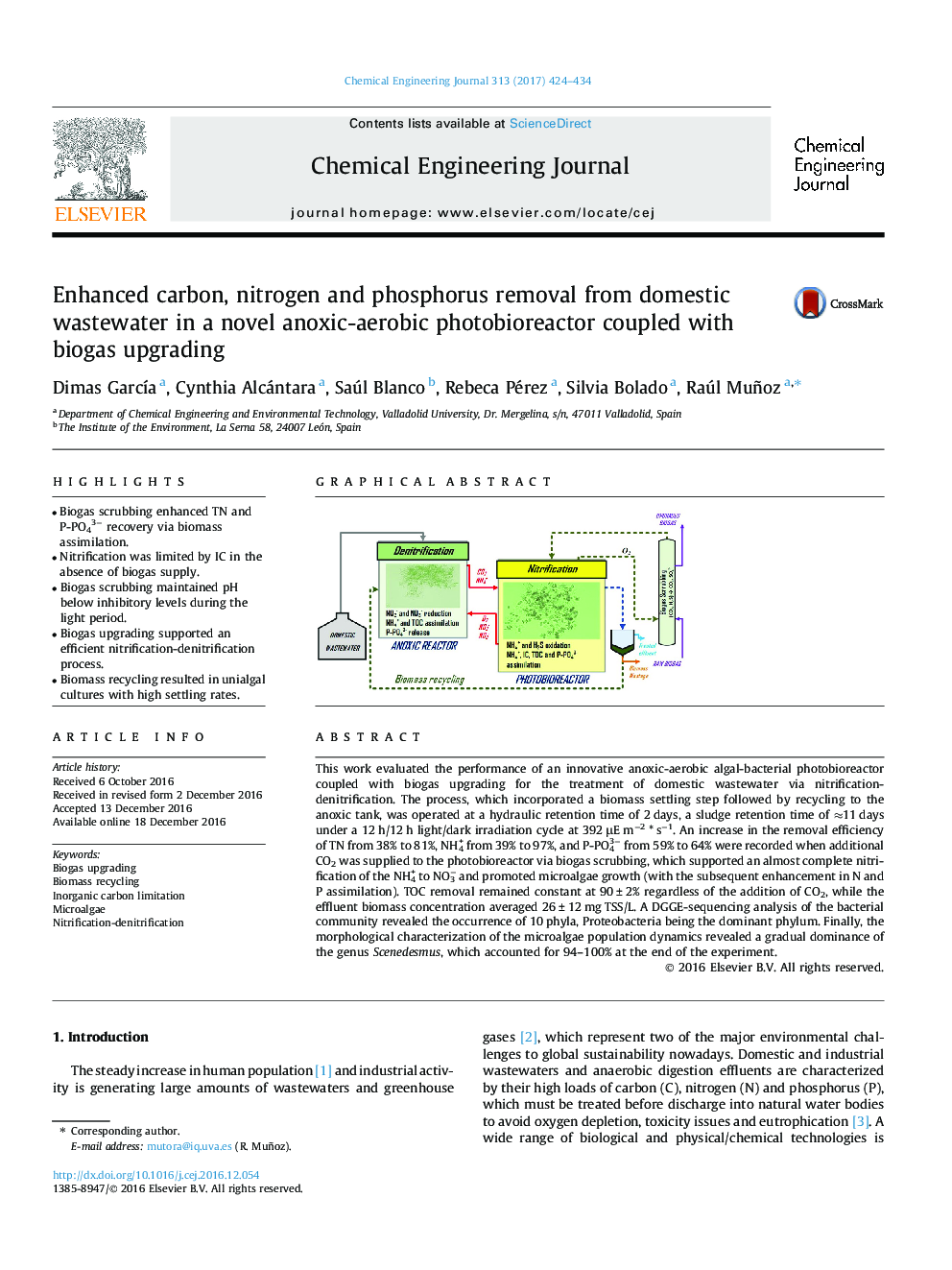| Article ID | Journal | Published Year | Pages | File Type |
|---|---|---|---|---|
| 6466566 | Chemical Engineering Journal | 2017 | 11 Pages |
â¢Biogas scrubbing enhanced TN and P-PO43â recovery via biomass assimilation.â¢Nitrification was limited by IC in the absence of biogas supply.â¢Biogas scrubbing maintained pH below inhibitory levels during the light period.â¢Biogas upgrading supported an efficient nitrification-denitrification process.â¢Biomass recycling resulted in unialgal cultures with high settling rates.
This work evaluated the performance of an innovative anoxic-aerobic algal-bacterial photobioreactor coupled with biogas upgrading for the treatment of domestic wastewater via nitrification-denitrification. The process, which incorporated a biomass settling step followed by recycling to the anoxic tank, was operated at a hydraulic retention time of 2 days, a sludge retention time of â11 days under a 12 h/12 h light/dark irradiation cycle at 392 μE mâ2 * sâ1. An increase in the removal efficiency of TN from 38% to 81%, NH4+ from 39% to 97%, and P-PO43â from 59% to 64% were recorded when additional CO2 was supplied to the photobioreactor via biogas scrubbing, which supported an almost complete nitrification of the NH4+ to NO3â and promoted microalgae growth (with the subsequent enhancement in N and P assimilation). TOC removal remained constant at 90 ± 2% regardless of the addition of CO2, while the effluent biomass concentration averaged 26 ± 12 mg TSS/L. A DGGE-sequencing analysis of the bacterial community revealed the occurrence of 10 phyla, Proteobacteria being the dominant phylum. Finally, the morphological characterization of the microalgae population dynamics revealed a gradual dominance of the genus Scenedesmus, which accounted for 94-100% at the end of the experiment.
Graphical abstractDownload high-res image (104KB)Download full-size image
